Prince
Prince 绝对是自从上世纪80年代之后,在世界流行音乐界涌现出的极少有的多才多艺的流行音乐家中最耀眼的一位。在整个80年代,Prince与 Stevie Wonder,Michael Jackson一并是最著名的流行音乐家。Prince是真正多才多艺的艺术家,真正的音乐天才,音乐全才,他精通吉他,贝斯,键盘,鼓的演奏,并且还能够使用其它许多种流行乐器,以至于有人说他一个人就可以成为一支乐队,在录音室里,他一个人就足以完成一整张专辑的录制。此外Prince的多才还表现在他对于不同中音乐风格的把握上,他曾经先后融合过包括疯克音乐(Funk),民谣,流行音乐,舞曲,摇滚乐,甚至是硬摇滚乐,并且这些作品几乎无一例外的获得了各界的高度评价。并且Prince创作与演唱能力俱佳,在他所表演的音乐作品中绝大多数都是由他亲自完成创作的,他还经常为其他许多著名的流行歌星创作单曲,而Prince运用身体进行表演的能力更是与Michael Jackson一并成为了后生音乐人极难逾越的一个高峰,Prince的身体表现力及其动作的丰富,即便是Michael Jackson也难以企及。Prince 不仅是一位多才的音乐家,同时还是一名高产的音乐家,而他敢于融合各种不同音乐风格作品的实验勇气和能力更是在80年代后同时代的音乐家中无人可出其右的。自从1978年发行了首张专辑《For You》之后,尽管一直频繁的参加各种巡回演出,但是Prince把大部分的时间都交给了录音室,基本上每年Prince都有新专辑问世,除此之外他还创作并录制了大量的尚未发行的或者已经被筛选掉的音乐作品。而Prince的这些专辑也决非粗制滥造的作品,在这些作品中人们都能够感受到Prince所表现出的才华以及在音乐风格上的变化。从Prince的音乐作品中,人们可以更清晰的体会到音乐的多样性,重新定义了各种音乐类型的界线。 Prince对于流行音乐以及摇滚乐的发展产生了非常大的影响,拥有极其重要的地位。在不同的音乐风格中,Prince融合不同风格音乐的能力,是同时代几乎所有音乐人都不能及的,有时他把两种完全无法相提并论的音乐风格捏合在一起,尽管并不成功,但是那也意味着已经几乎肯定没有人能够比Prince做的更好了。而令人赞叹的是,在Prince的作品中,真正在音乐上失败的作品非常之少,他的绝大多数作品在音乐上都是非常成功的。大事记1958 年6月7日,Prince出生在美国明尼苏达州的重镇明尼阿波利斯一个音乐家庭中,原名Prince Rogers Nelson。父亲John Nelson是一个名叫Prince Roger Trio的乐队的钢琴演奏者,Prince的名字也正是由此得来。不过Prince的家庭不久破裂,Prince随后不久就从母亲和继父那里逃了出来,并且重新回到了生父John Nelson那里。父亲后来给Prince买来了他的第一把吉他,但是随后不久,Prince被Anderson家收养,在这里,年幼的Prince与家里的Andre Anderson成为了最好的朋友,Andre Anderson就是后来的黑人歌手Andre Cymone。在Anderson家,Prince除了开始弹奏吉他之外,还开始弹奏钢琴并且尝试着自己创作歌曲。初中时的Prince 组建了自己的第一支乐队Grand Central,Grand Central乐队由Prince和Andre Anderson,以及Andre Anderson的表兄弟Charles Smith组成。在升入高中以后,Prince的Grand Central乐队更名为Champagne,并且Prince请原来乐队中的成员一同加入了新乐队。在高中时候,Prince的音乐发展开始进入正轨,他开始先后在一些地方举行演出活动,并且渐渐得到提高,也有了一些名气。1976年,Prince开始录制自己的第一张音乐样带, Chris Moon教给了他如何使用录音室内的设备,18岁的Prince立即对录音产生了浓厚的兴趣,他在录音室里一呆就是几周时间,在里边不停的摸索,实验去录制唱片,录制不同的音乐,并且很快就制作出了一些非常高质量的唱片。Chris Moon还把Prince介绍到了Owen Husney那里作为后场预备人员,而正是通过在Owen Husney这里的锻炼和积累,Prince终于赢得了著名的Warner Brothers Records唱片公司的合同。1978年,Prince发行了自己的首张个人专辑《For You》。由于Prince习惯于在录音室中不断的实验不断的改进,因而这张专辑在制作的时候费用就已经严重超支,同时这张融合了疯克和灵魂乐的专辑在商业上并没有特别突出的表现,在排行榜上仅名列第163位。不过对于一个没有名气的20岁新人来说,这张专辑已经是非常了不起的作品了。随后在1979年, Prince依旧是自己操刀,录制了第二张个人专辑《Prince》,这张专辑依旧在录制的时候非常细致,花费再次超支,不过这张专辑中却出现了两首好的单曲《Why You Wanna Treat Me So Bad?》和《I Wanna Be Your Lover》,而这张专辑的销量也比上一张专辑有所起色。1980年,Prince的专辑《Dirty Mind》成为了他的第一张有影响力的作品,不过这张专辑以吹捧性为主题,因而从少年时代就开始和Prince一起工作的Andre Cymone,以及他在高中时的队友都纷纷离开了Prince转而谋求个人音乐事业上的发展。尽管有朋友开始离开,但是由于此前的专辑基本上都是由 Prince一个人创作并完成录制,Andre Cymone等人更多的只是在巡演期间担任伴奏,所以在新专辑录制方面并没有受到严重的影响,Prince很快就在1981年的时候又发行了第四张个人专辑《Controversy》,这张专辑与《Dirty Mind》比较相似,同样是一张带有疯克特点的融合灵魂乐和摇滚乐的专辑。1983 年,Prince发行了具有突破性的第五张个人专辑《1999》,这张专辑让Prince成为了真正的明星。这张依然以性和性幻想位主要内容的电子疯克音乐专辑在美国流行乐坛掀起了旋风,全美销量超过了300万张,让此前一直不温不火的Prince成为了主要的流行乐明星。这张专辑不仅获得了商业上的成功也赢得了评论界的好评,并且从中诞生出了包括《Little Red Corvette》《Delirious》在内的多首出色单曲。美国《滚石》杂志曾经评论,如果说《1999》让Prince成为了明星的话,那么《Purple Rain》让Prince成为了国王。1984年,Prince发行了他的第六张个人专辑,具有历史意义的《Purple Rain》。从这张专辑里诞生出了《When Doves Cry》《I Would Die 4 U》《Purple Rain》这样的整个80年代标志性的单曲。而这张专辑在全美的销量令人惊异的突破了1000万张,在排行榜冠军宝座上一住就是24周!在这张专辑中, Prince的风格再次发生了变化,在这张专辑里,音乐更为流行化,而在录制的时候,Prince也是与他的巡演乐队the Revolution一起录制的。《Purple Rain》这张专辑不仅成为了Prince音乐事业中的最高峰,也成为了整个80年代的流行音乐的重要标志性专辑之一。就在《Purple Rain》成为了Prince音乐的一个最重大的辉煌成就的时候,Prince的音乐风格却再次发生了令人意想不到的变化。俨然已经超越了他那个时代的一张迷幻专辑《Around the World in a Day》在1985年正式发行,这张专辑的发行再次证明了Prince的天才。尽管是一张迷幻专辑,但是《Around the World in a Day》在Billboard 200排行榜上依然成为了冠军,全美销量突破了200万张,并且仍旧从中诞生出了多首杰出单曲。1986年,Prince的第八张个人专辑《Parade》正式发行,这张专辑的风格再次有所变化,这张专辑带有明显的艺术摇滚的特点,但是同时又融合了疯克音乐,而这张专辑的融合依旧是非常成功的,从这张专辑里诞生出了经典单曲《Kiss》。这张专辑也是Prince首次开始在自己的Paisley Park唱片公司发行专辑,当然,他的唱片公司也是隶属于母公司的。而就在这张专辑发行之后的巡演活动中,Prince的巡演乐队the Revolution宣告解散,Prince被迫花费了一段时间来重新组建了自己的巡演乐队。1987年,Prince发行了又一张具有轰动效应的经典专辑《Sign o' the Times》,这张专辑在商业和评论界都再次获得了巨大的成功,从这张专辑里诞生出了《I Could Never Take The Place of Your Man》《If I Was Your Girlfriend》《U Got The Look》等经典的冠军单曲。虽然在这张专辑的音乐风格上,Prince没有再次做出什么令人大跌眼镜的举动,但这次在歌词创作方面却颇为闪光。尽管整张专辑的主题内容是性以及其他一些相对消极的内容,但是这张专辑里的多首单曲以及其紧凑的歌词内容,也再次让人们为Prince的创作才华感到由衷的赞叹。在这张非常成功的专辑发行之后,Prince的变得更为野心勃勃,不过这种野心勃勃却让他开始和唱片公司发生了矛盾。就在《Sign o' the Times》这张令Prince再次达到颠峰的专辑发行之后,Prince决定马上发行另外一张专辑《The Black Album》,但是由于这张《The Black Album》被认为过于黑暗和不健康,因而唱片公司在这张专辑即将发行之前不久的时候,决定终止这张专辑的发行而改为发行另外一张专辑《Lovesexy》,然而这张在1988年发行的专辑无论是在评论界还是在商业上的遭遇都是灾难性的。Prince对于唱片公司发行这张专辑的做法也是非常的气氛和不满,并从此开始了与唱片公司的战争。在这张失败的专辑里,Prince的才华几乎完全没有展示出来,依靠在过去的几张专辑的成功而堆积起来的歌迷的凝聚力开始丧失。Prince从此时开始,辉煌无限的音乐事业出现了滑坡。1989年,Prince制作了经典电影《蝙蝠侠》 (Batman)的电影原声,并且借此重新返回了排行榜冠军的宝座,但是这张唱片在音乐上并没有任何令人称道的地方,因而虽然成为了排行榜冠军,但是并没有阻止Prince音乐事业的下滑。1990年,Prince又发行了专辑《Graffiti Bridge》,作为最鼎盛专辑《Purple Rain》的完结篇,但是这张专辑甚至没能取得《Purple Rain》五分之一的成功,这张带有福音歌曲特点的专辑再次让人失望了。1991 年,Prince组建了the New Power Generation乐队,决心从头再来,《Diamonds and Pearls》是Prince以the New Power Generation乐队的身份发行的首张专辑。在the New Power Generation乐队,Prince决心把音乐风格重新转向R&B和城市音乐,而此时的Prince也开始更多的通过肢体语言来增强表现力,这让人们领略到了这位全才在此方面的天赋。《Diamonds and Pearls》再次取得了巨大的成功,而此时Prince决定把名字改为“The Symbol”,到1993年,Prince正式更名为The Symbol。1992年,Prince就以The Symbol的名字发行了专辑《The Love Symbol Album》,这张专辑仍然保持着非常高的销量,并且在排行榜上名列前茅。不过尽管成绩依然非常显著,但是Prince已经渐渐失去了在80年代中后期时的统治力。1994年,Prince和Warner Brothers Records唱片公司再次因为合同问题而爆发了法律纠纷,这让原本就与唱片公司矛盾重重的Prince不得不渐渐陷入困境。Prince甚至独立发行了单曲《The Most Beautiful Girl in the World》,即便是独立发行,但是这首单曲仍然是Prince在这年成绩最好的单曲。这一年,尽管Prince已经合法正式改名,但是Warner Brothers Records唱片公司以“Prince”的名字发行了Prince的专辑《Come》,不过这张专辑仍然只是反复他早期的作品形式而已,因而并没有得到评论界太高的评价,在商业商业并没有获得太大的成功。同年,Prince在1987年发行未遂的专辑《The Black Album》经历了和唱片公司的长期斗争之后终于面世,不过销量一般。而在1993年发行的3CD精选集也很难说的上是成功。1995 年,Prince再次与Warner Brothers Records唱片公司爆发了矛盾,Prince不仅宣称他自己在唱片公司像奴隶一样被对待,同时唱片公司还拒绝发行他的新专辑《The Gold Experience》。最终Warner Brothers Records唱片公司与Prince达成妥协,正式发行了《The Gold Experience》,并且还将有一张专辑就结束与Prince的合同。《The Gold Experience》是一张在评论界赢得了非常高赞誉的专辑,并且其中也不乏较突出的打榜单曲,他被批评家们认为是Prince的音乐灵感重新复活的一张作品,不过,虽然这张专辑在首周就排在排行榜的第6位,但是由于唱片公司的不支持,这张专辑的最终成绩依然难以令人满意。几乎也就是从此时开始,失去了唱片公司支持的Prince的音乐作品进入了叫好不叫卖的窘境。1996年,Prince在发行了专辑《Chaos & Disorder》之后,终于结束了与Warner Brothers Records唱片公司的恩恩怨怨,Prince成为了一名独立的自由音乐人。而这张《Chaos & Disorder》的商业成绩比《The Gold Experience》更可怜。就在离开Warner Brothers Records唱片公司之后几个月,Prince马上就成立了自己新的唱片公司——隶属于EMI唱片公司的NPG唱片公司。并且Prince在公司成立不久之后就马上推出了由三张CD组成的音乐巨著《Emancipation》,这张3CD的专辑推出了多达几十首的新歌,并且无论是编排选曲等各个方面都是非常的出色,但是这张过于庞大的专辑在商业上并没有能够取得像Prince想象中的成功,不过就和前几张专辑一样,这张3CD专辑依然获得了评论界的青睐。虽然《Emancipation》商业上没有取得理想中的巨大成功,但是雄心勃勃立志重现辉煌的Prince仍然没有罢休,他继续养精蓄锐,经历两年的精心打造,在1998年推出了更为庞大的4CD专辑《Crystal Ball》,在这张专辑中有三张CD都收录之前未发行的新歌,另一张CD则是名为《The Truth》的不插电歌曲专辑。这张制作非常精良,音乐非常出色的作品同样由于过于庞大,加上没有唱片公司的支持而遇到了一些艰难,同样没有取得什么好的成绩。而Prince又马上制作了一张单CD个人专辑《New Power Soul》在《Crystal Ball》发行仅仅三个月就发行,但是这张专辑依然失败了,同样由于没有大唱片公司的支持,大部分的歌迷甚至不知道这张专辑已经在《Crystal Ball》发行三个月之后正式上市了。1999年,Prince又加盟了Arista唱片公司,并且发行了专辑《Rave Un2 the Joy Fantastic》,在排行榜上勉强进入了前20名,但是总销量依然不佳。Prince还发行了自己的经典专辑《1999》的特别版,同时还发行了在 Warner Brothers Records唱片公司时期的音乐合集《Vault: Old Friends 4 Sale》,不过这两套专辑在商业上都没有什么像样的成绩。同时,在与Warner Brothers Records唱片公司产生矛盾的时期频繁改名的Prince,也正式宣布将在1999年12月31日与Warner Brothers Records唱片公司的合同完全结束之后,正式恢复使用原名“Prince”。在《Rave Un2 the Joy Fantastic》发行之后,Prince又与Arista唱片公司分道扬镳,并且在此后近五年的时间里都没有再与主流大唱片公司签约,一直作为独立身份录制并发行专辑。2001年,Prince通过自己的NPG唱片公司独立发行了专辑《The Rainbow Children》,2003年又独立发行了器乐演奏专辑《N.E.W.S》,但是这两张独立发行的专辑的销量都没有进入排行榜的前一百名,这两张专辑只是通过Prince的官方网站以及歌迷俱乐部组织发行了几万张。2004年初的第46届格莱美颁奖典礼上的精彩表演结束之后,Prince终于在2004 年4月20日发行了他在Columbia唱片公司的首张专辑《Musicology》,这张专辑也是五年后Prince的首张主流唱片公司作品。作为摇滚乐和流行音乐跨时代的巨星,Prince于2004年3月被请入了象征西方流行音乐最高荣誉的摇滚乐名人堂(Rock and Roll Hall of Fame)。此外,Prince及其乐队曾经先后四次获得了格莱美奖。在1984年度第27届格莱美奖颁奖典礼上,Prince一举包揽了三项大奖,凭借单曲《Purple Rain》,Prince和他的乐队The Revolution一起获得了最佳R&B组合奖(Best R&B Performance By A Duo Or Group With Vocal),凭借他们最颠峰的专辑《Purple Rain》,Prince和他的乐队The Revolution同时还获得了最佳影视原创专辑奖(Best Album Of Original Score Written For A Motion Picture Or A Television Special),而由Prince个人创作的单曲《I Feel For You》还获得了最佳R&B歌曲奖(Best Rhythm & Blues Song)。两年之后的1987年,在1986年度第29届格莱美颁奖典礼上,凭借单曲《Kiss》,Prince和他的乐队The Revolution一起再次获得了最佳R&B组合奖。Few artists have created a body of work as rich and varied as Prince. During the '80s, he emerged as one of the most singular talents of the rock & roll era, capable of seamlessly tying together pop, funk, folk, and rock. Not only did he release a series of groundbreaking albums; he toured frequently, produced albums and wrote songs for many other artists, and recorded hundreds of songs that still lie unreleased in his vaults. With each album he released, Prince has shown remarkable stylistic growth and musical diversity, constantly experimenting with different sounds, textures, and genres. Occasionally, his music can be maddeningly inconsistent because of this eclecticism, but his experiments frequently succeed; no other contemporary artist can blend so many diverse styles into a cohesive whole.Prince's first two albums were solid, if unremarkable, late-'70s funk-pop. With 1980's Dirty Mind, he recorded his first masterpiece, a one-man tour de force of sex and music; it was hard funk, catchy Beatlesque melodies, sweet soul ballads, and rocking guitar pop, all at once. The follow-up, Controversy, was more of the same, but 1999 was brilliant. The album was a monster hit, selling over three million copies, but it was nothing compared to 1984's Purple Rain.Purple Rain made Prince a superstar; it eventually sold over ten million copies in the U.S. and spent 24 weeks at number one. Partially recorded with his touring band, the Revolution, the record featured the most pop-oriented music he has ever made. Instead of continuing in this accessible direction, he veered off into the bizarre psycho-psychedelia of Around the World in a Day, which nevertheless sold over two million copies. In 1986, he released the even stranger Parade, which was in its own way as ambitious and intricate as any art rock of the '60s; however, no art rock was ever grounded with a hit as brilliant as the spare funk of "Kiss."By 1987, Prince's ambitions were growing by leaps and bounds, resulting in the sprawling masterpiece Sign 'O' the Times. Prince was set to release the hard funk of The Black Album by the end of the year, yet he withdrew it just before its release, deciding it was too dark and immoral. Instead, he released the confused Lovesexy in 1988, which was a commercial disaster. With the soundtrack to 1989's Batman he returned to the top of the charts, even if the album was essentially a recap of everything he had done before. The following year he released Graffiti Bridge, the sequel to Purple Rain, which turned out to be a considerable commercial disappointment.In 1991, Prince formed the New Power Generation, the best and most versatile and talented band he has ever assembled. With their first album, Diamonds and Pearls, Prince reasserted his mastery of contemporary R&B; it was his biggest hit since 1985. The following year, he released his 12th album, which was titled with a cryptic symbol; in 1993, Prince legally changed his name to the symbol. In 1994, after becoming embroiled in contract disagreements with Warner Bros., he independently released the single "The Most Beautiful Girl in the World," likely to illustrate what he would be capable of on his own; the song became his biggest hit in years. Later that summer, Warner released the somewhat halfhearted Come under the name of Prince; the record was a moderate success, going gold.In November 1994, as part of a contractual obligation, Prince agreed to the official release of The Black Album. In early 1995, he immersed himself in another legal battle with Warner, proclaiming himself a slave and refusing to deliver his new record, The Gold Experience, for release. By the end of the summer, a fed-up Warner had negotiated a compromise that guaranteed the album's release, plus one final record for the label. The Gold Experience was issued in the fall; although it received good reviews and was following a smash single, it failed to catch fire commercially. In the summer of 1996, Prince released Chaos & Disorder, which freed him to become an independent artist. Setting up his own label, NPG (which was distributed by EMI), he resurfaced later that same year with the three-disc Emancipation, which was designed as a magnum opus that would spin off singles for several years and be supported with several tours. However, even his devoted cult following needed considerable time to digest such an enormous compilation of songs. Once it was clear that Emancipation wasn't the commercial blockbuster he hoped it would be, Prince assembled a long-awaited collection of outtakes and unreleased material called Crystal Ball in 1998. With Crystal Ball, Prince discovered that it's much more difficult to get records to an audience than it seems; some fans who pre-ordered their copies through Prince's website (from which a bonus fifth disc was included) didn't receive them until months after the set began appearing in stores. Prince then released a new one-man album, New Power Soul, just three months after Crystal Ball; even though it was his most straightforward album since Diamonds and Pearls, it didn't do well on the charts, partly because many listeners didn't realize it had been released.A year later, with "1999" predictably an end-of-the-millennium anthem, Prince issued the remix collection 1999 (The New Master). A collection of Warner Bros.-era leftovers, Vault: Old Friends 4 Sale, followed that summer, and in the fall Prince returned on Arista with the all-star Rave Un2 the Joy Fantastic. In the fall of 2001 he released the controversial Rainbow Children, a jazz-infused circus of sound trumpeting his conversion to the Jehovah's Witnesses that left many longtime fans out in the cold. He further isolated himself with 2003's N.E.W.S., a four-song set of instrumental jams that sounded a lot more fun to play than to listen to. Prince rebounded in 2003 with the chart-topping Musicology, a return to form that found the artist back in the Top Ten, even garnering a Grammy nomination for Best Male Pop Vocal Performance in 2005. In early 2006 he was the musical guest on Saturday Night Live, performing two songs with a new protégée, R&B singer Tamar. A four-song appearance at the Brit Awards with Wendy, Lisa, and Sheila E. followed. Both appearances previewed tracks from 3121, which hit number one on the album charts soon after its release in March 2006. Planet Earth followed in 2007, featuring contributions from Wendy and Lisa. In the U.K., copies were cover-mounted on the July 15 edition of The Mail on Sunday, provoking Columbia — the worldwide distributor for the release — to refuse distribution throughout the U.K. In the U.S., the album was issued on July 24.

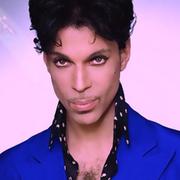
 I Need A Man(2020 Remaster) - Prince
I Need A Man(2020 Remaster) - Prince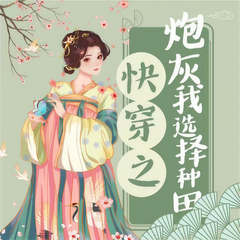



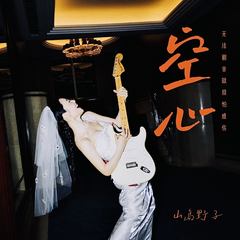



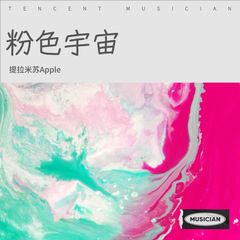

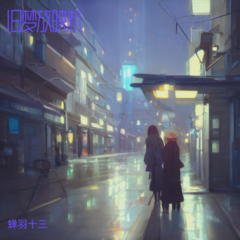
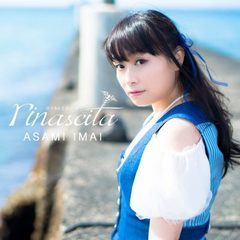
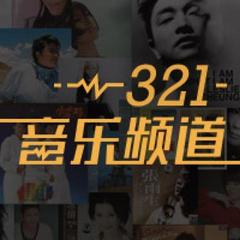
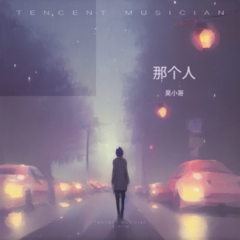
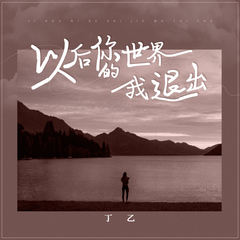














![[STATION] aespa《Dreams Come True》MV Teaser - aespa (에스파)](https://img2.kuwo.cn/wmvpic/324/79/54/2120387380.jpg?imageView2/1/w/195/h/130/format/jpg/q/60)





